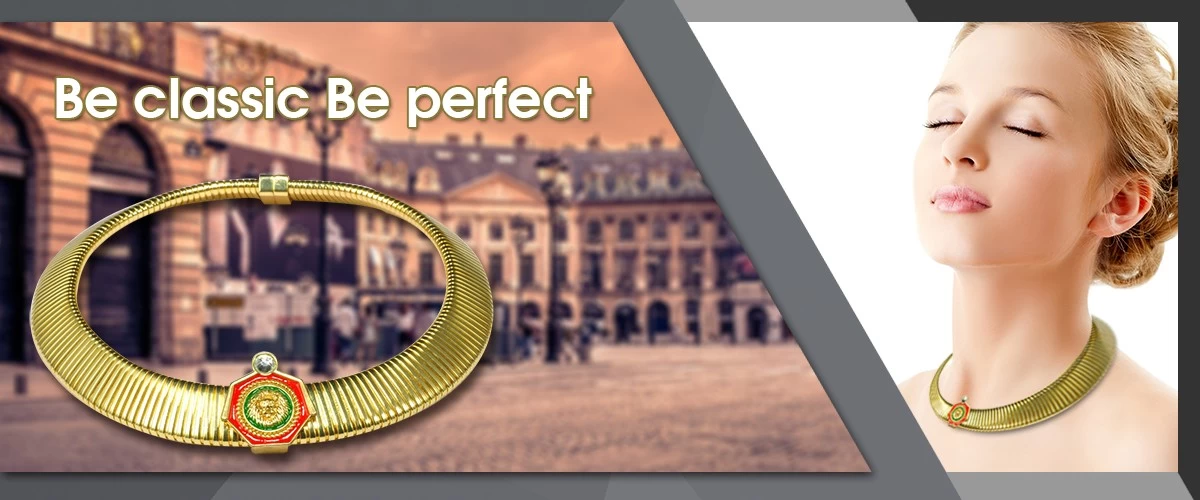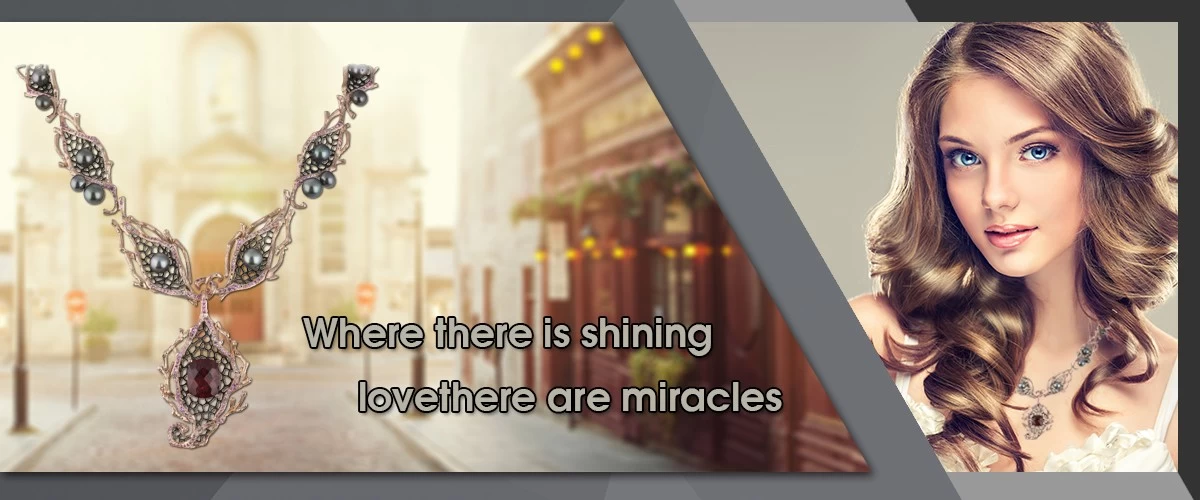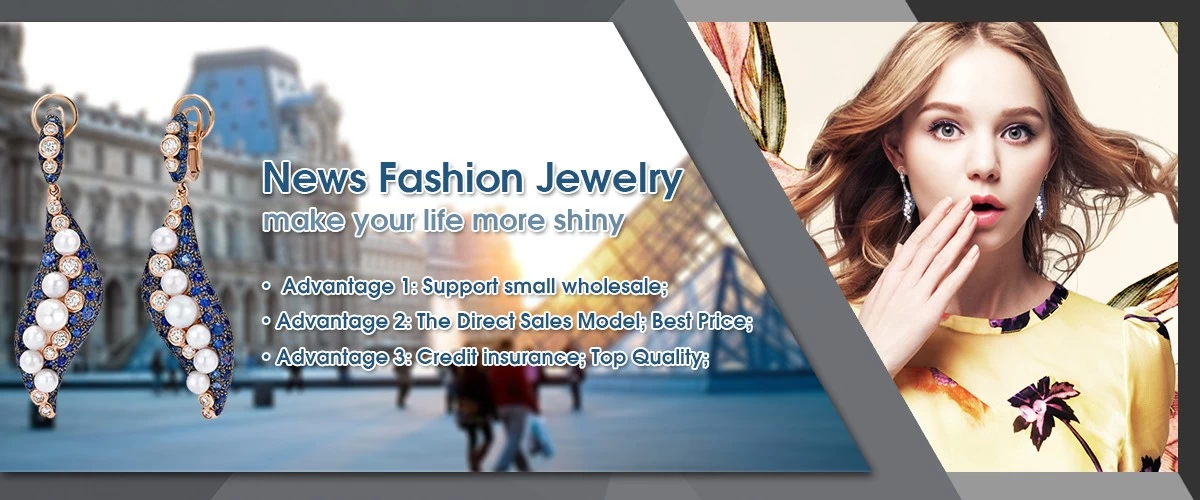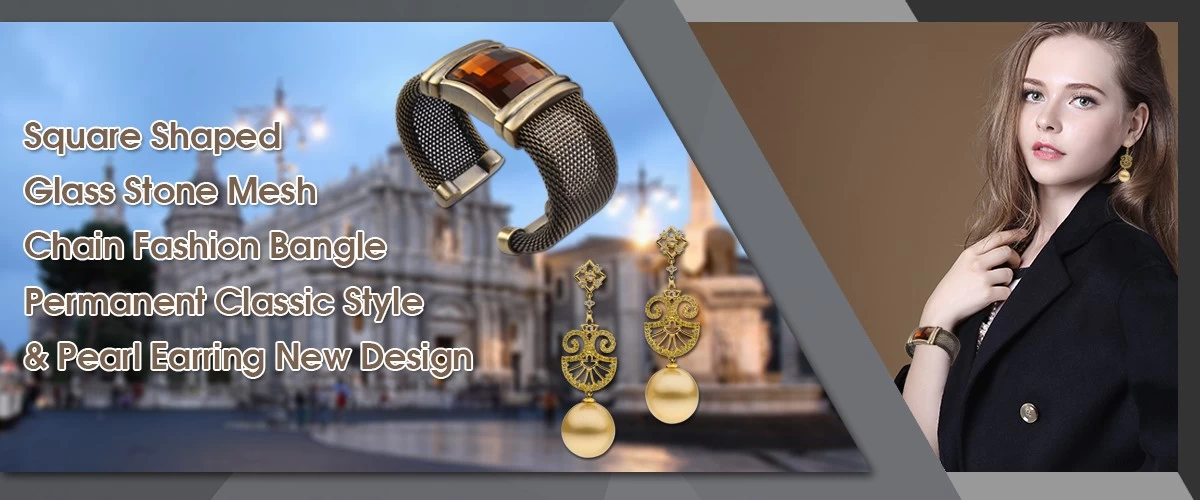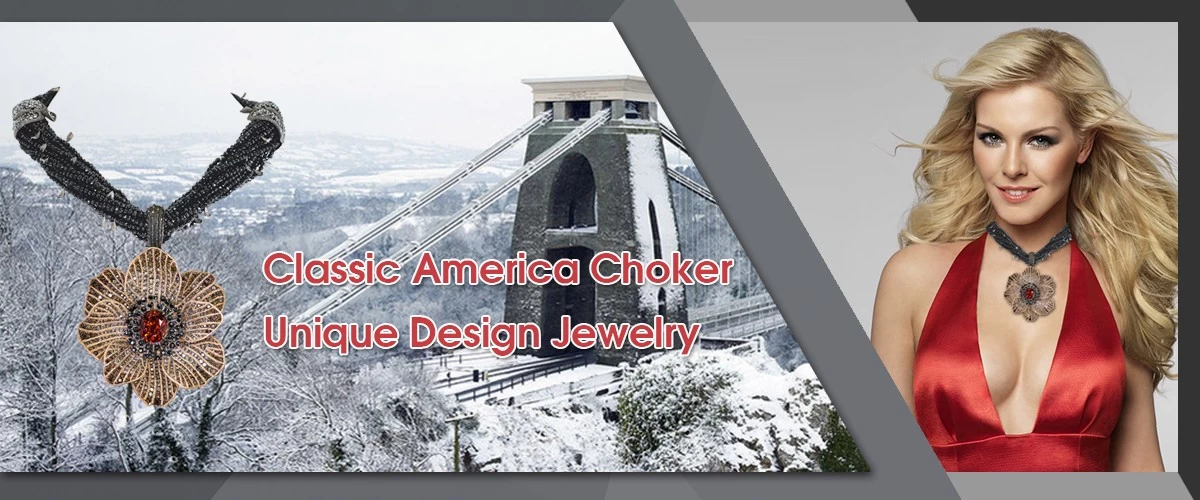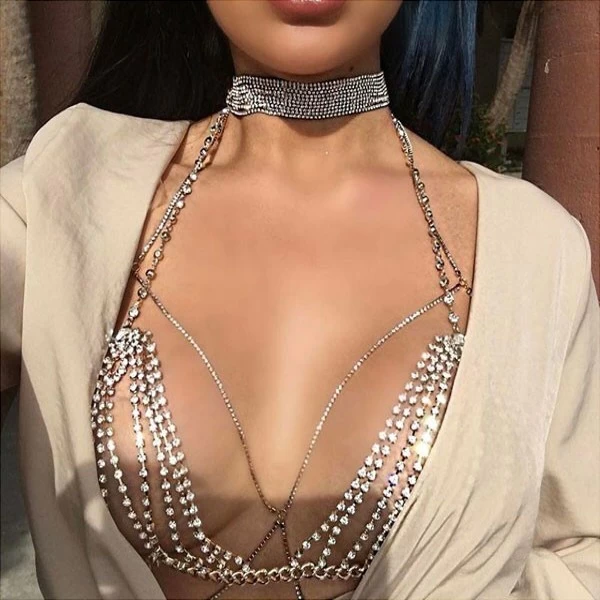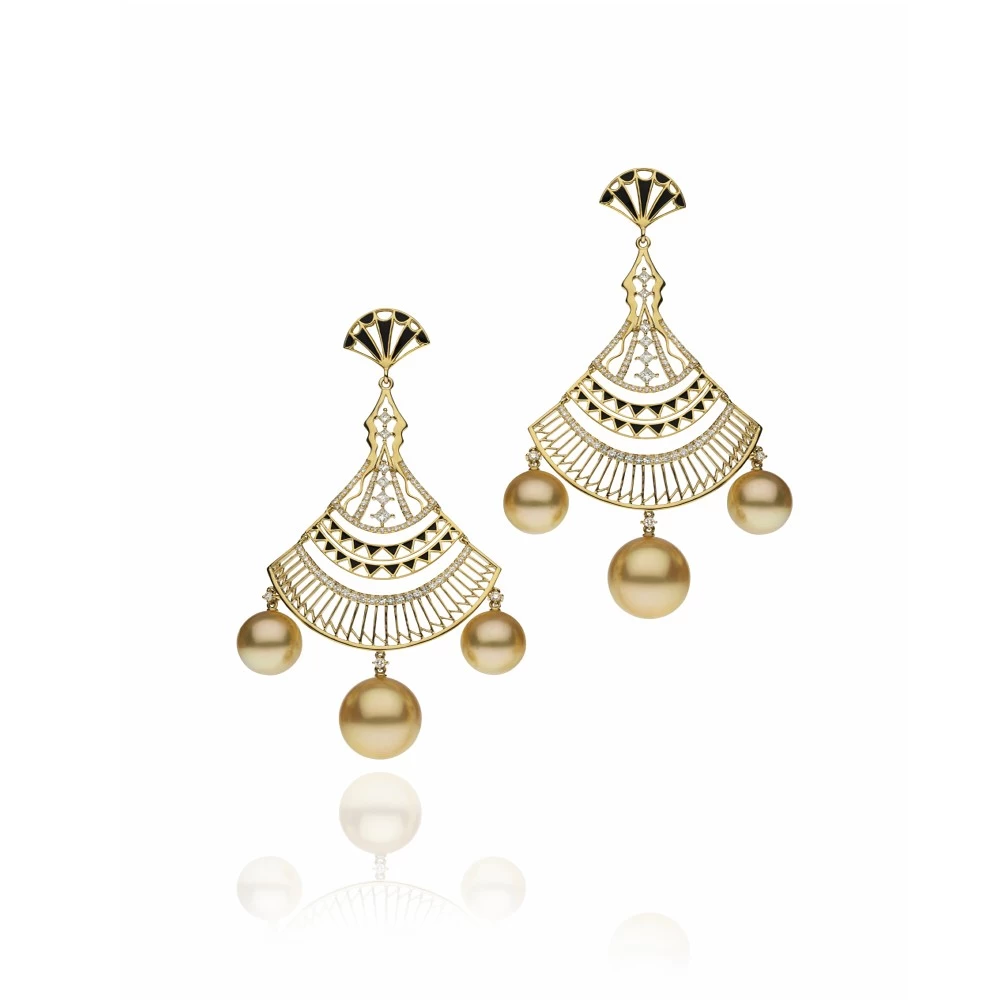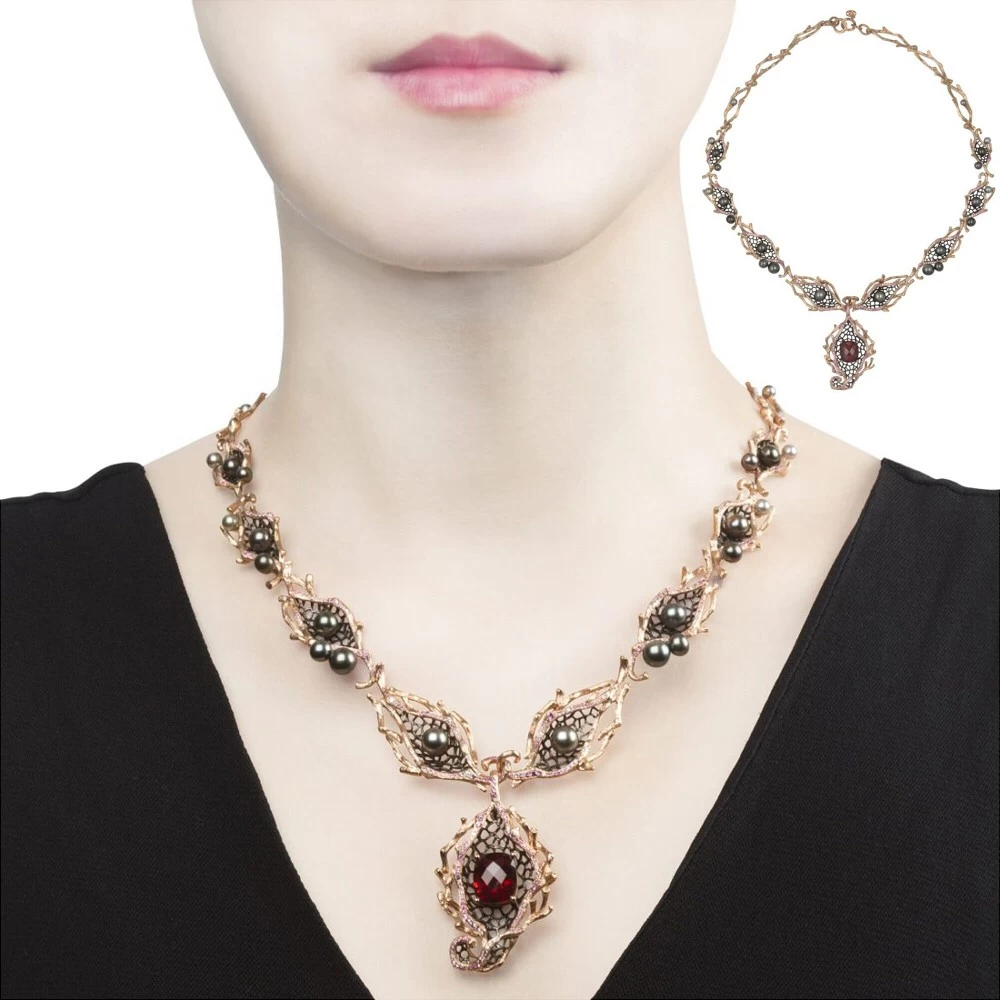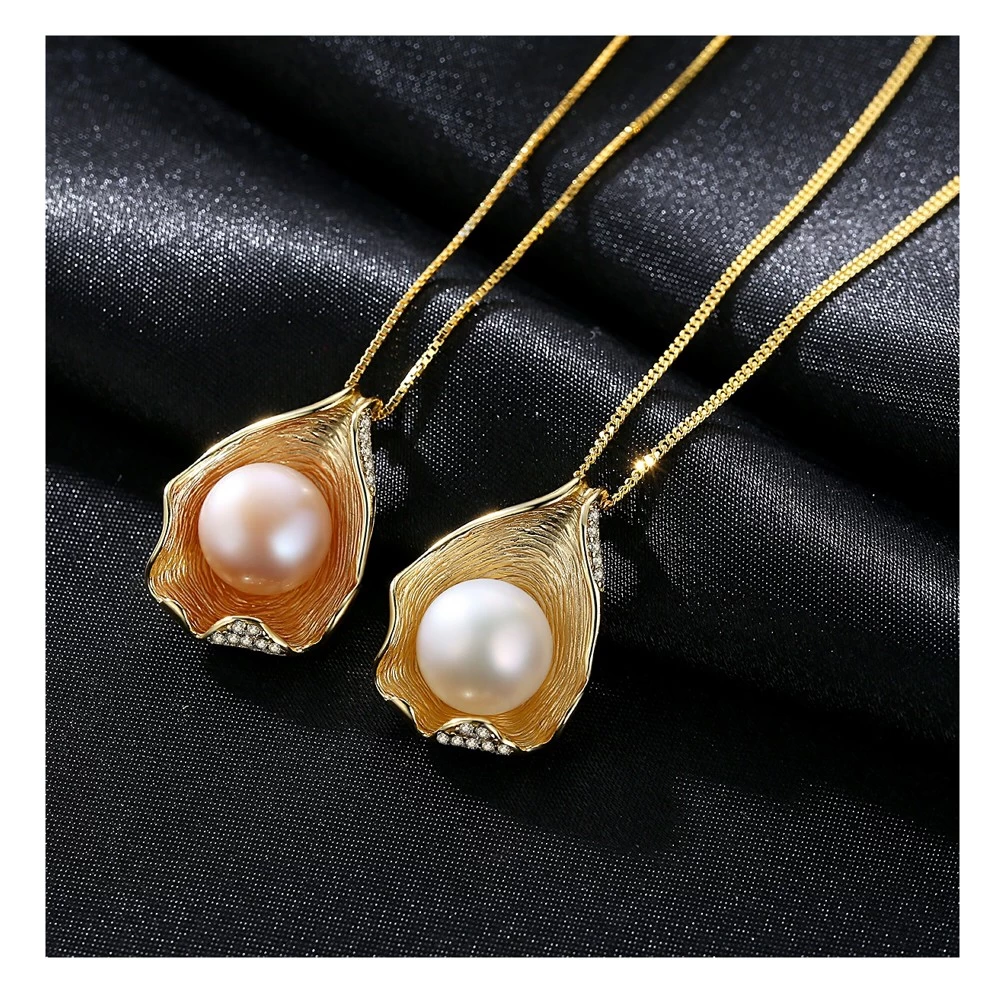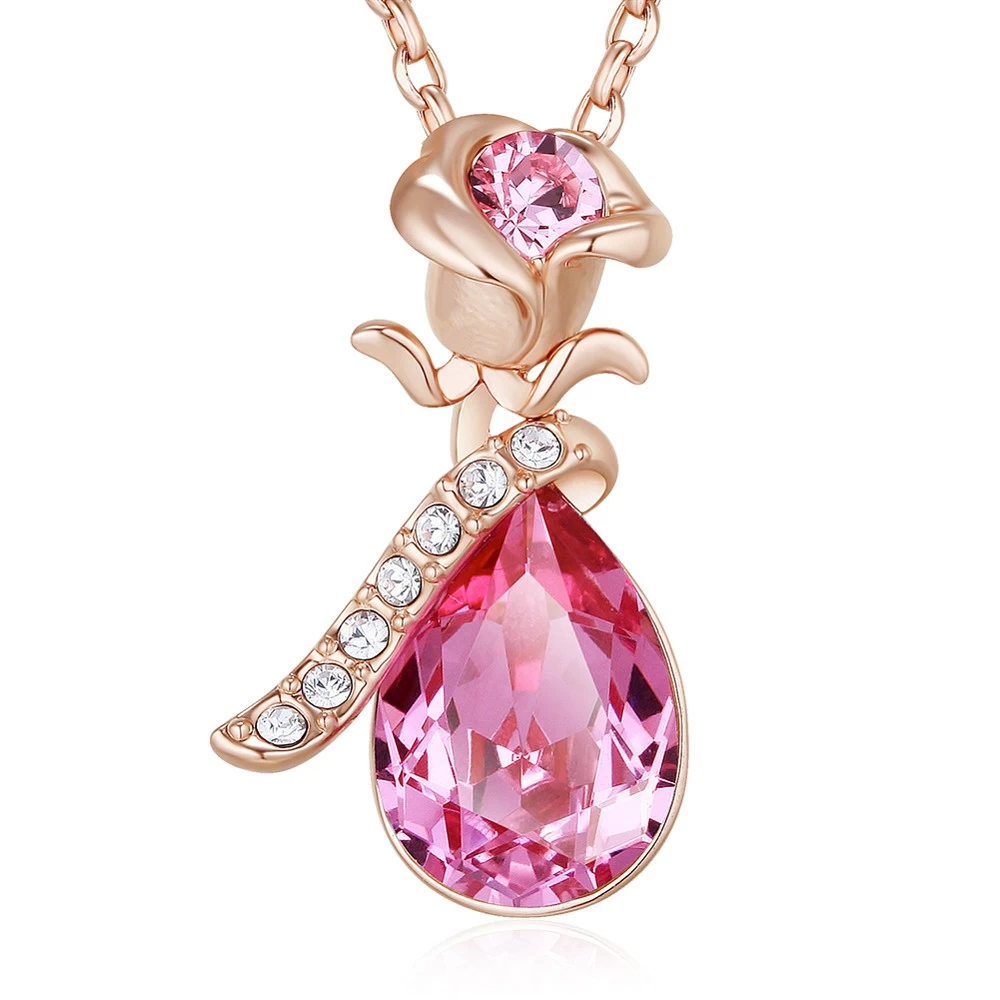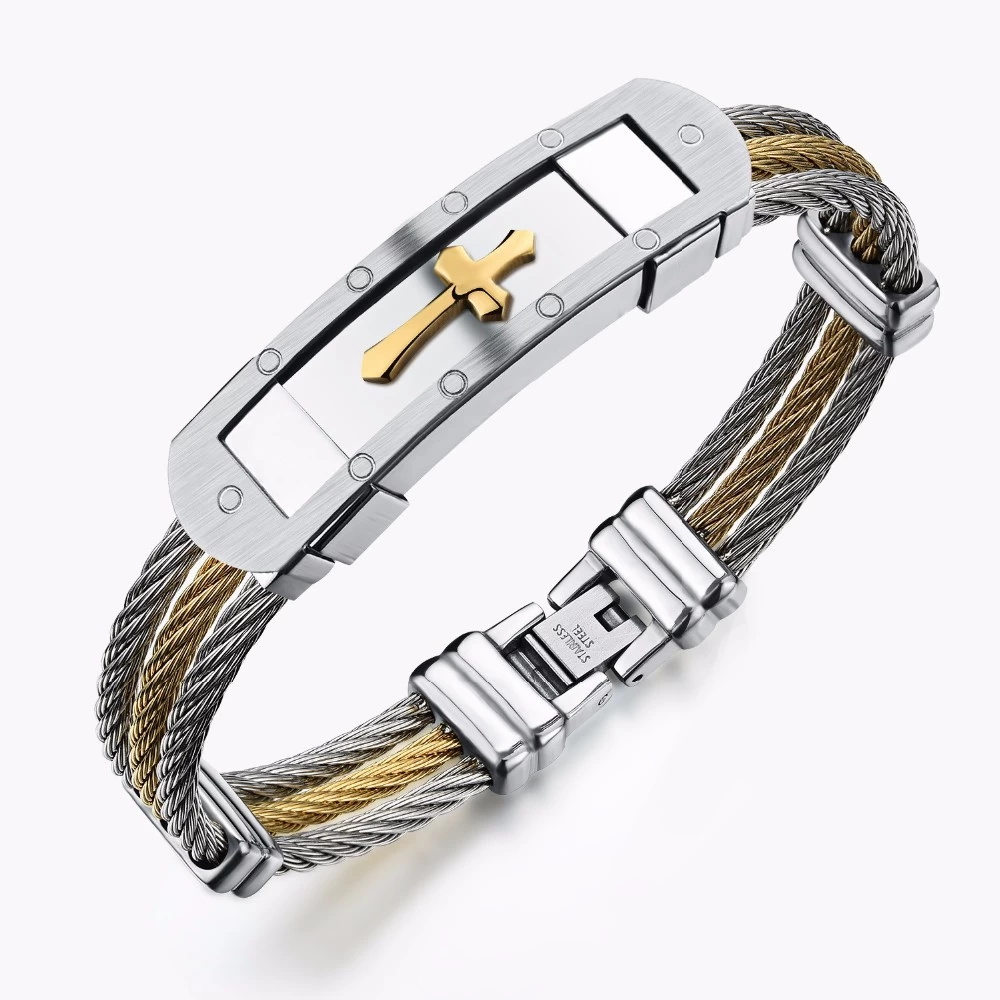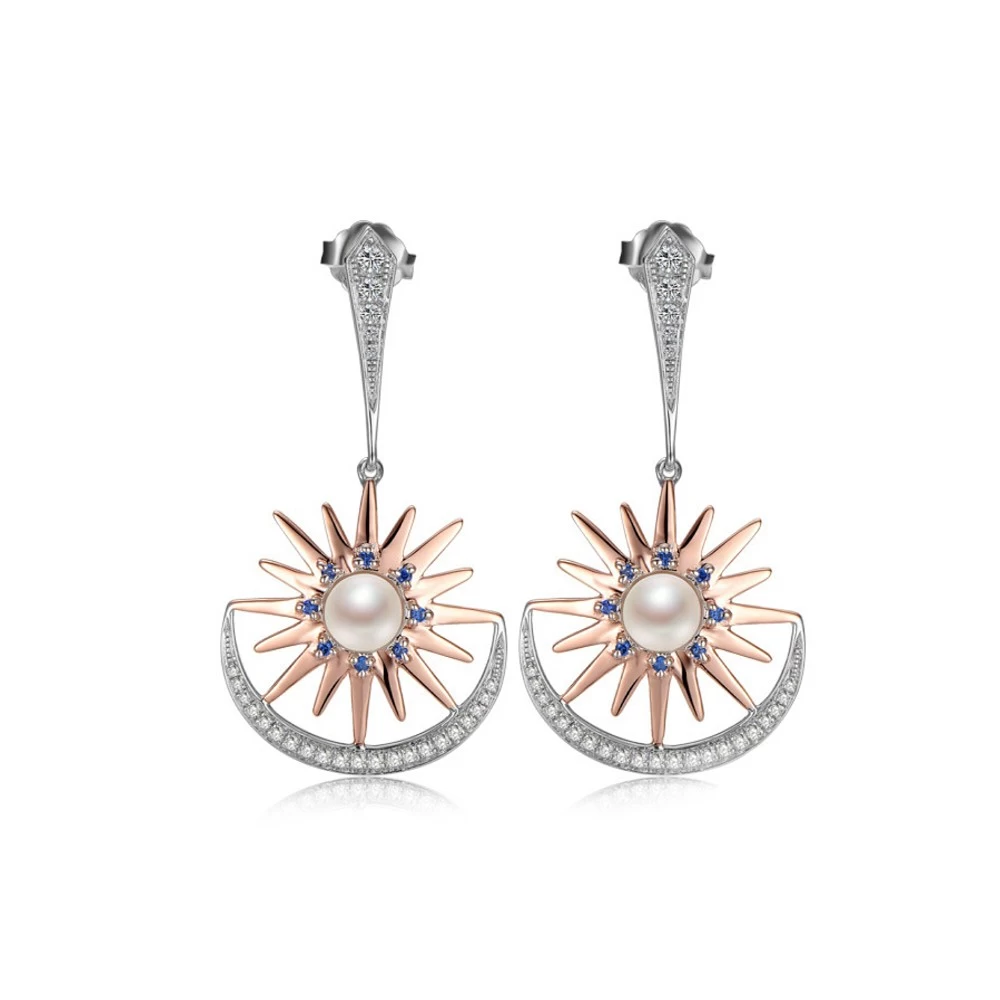A history of jewellery1
Meilanxuan
fashionjewelryfactory.com
2017-11-30 15:24:13
Ancient world jewellery
Jewellery is a universal form of adornment. Jewellery made from shells, stone and bones survives from prehistoric times. It is likely that from an early date it was worn as a protection from the dangers of life or as a mark of status or rank.
In the ancient world the discovery of how to work metals was an important stage in the development of the art of jewellery. Over time, metalworking techniques became more sophisticated and decoration more intricate. Meilanxuan create beauty for every woman through earring manufacturer china.
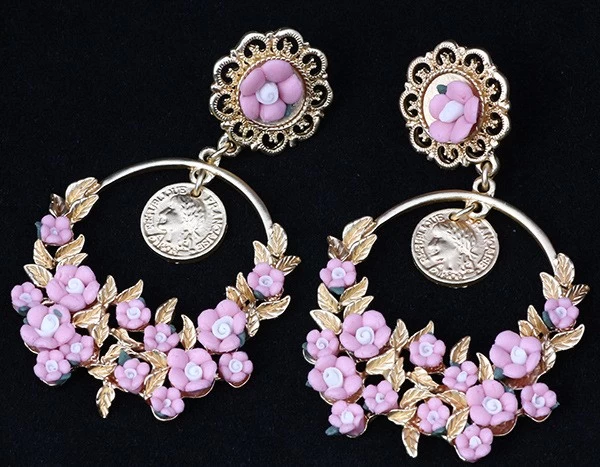
Gold, a rare and highly valued material, was buried with the dead so as to accompany its owner into the afterlife. Much archaeological jewellery comes from tombs and hoards. Sometimes, as with the gold collars from Celtic Ireland which have been found folded in half, it appears people may have followed a ritual for the disposal of jewellery.
This collar was found in a bog in Shannongrove, Co. Limerick, Ireland, sometime before 1783. We do not know what it was used for, but it was probably a ceremonial collar. On the inner side of the collar, under each of the circular terminals, is a hole. The collar probably rested on the chest and was held in place by a chain running between the two holes and passing round the back of the neck.
The images decorating the back of this cross were often used as a focus for meditation in the late medieval period. The scenes on the lid show the Instruments of the Passion - scourge, whip, lance, sponge and nails - which were used during the Crucifixion. A tiny fragment of one of them may have formed a relic, stored within the cross’s now empty interior. Pearls symbolised purity, and the red gems may have symbolised sacrificial blood shed by Christ.Meilanxuan Woman's necessities, provide Fashion jewelry wholesale in china.
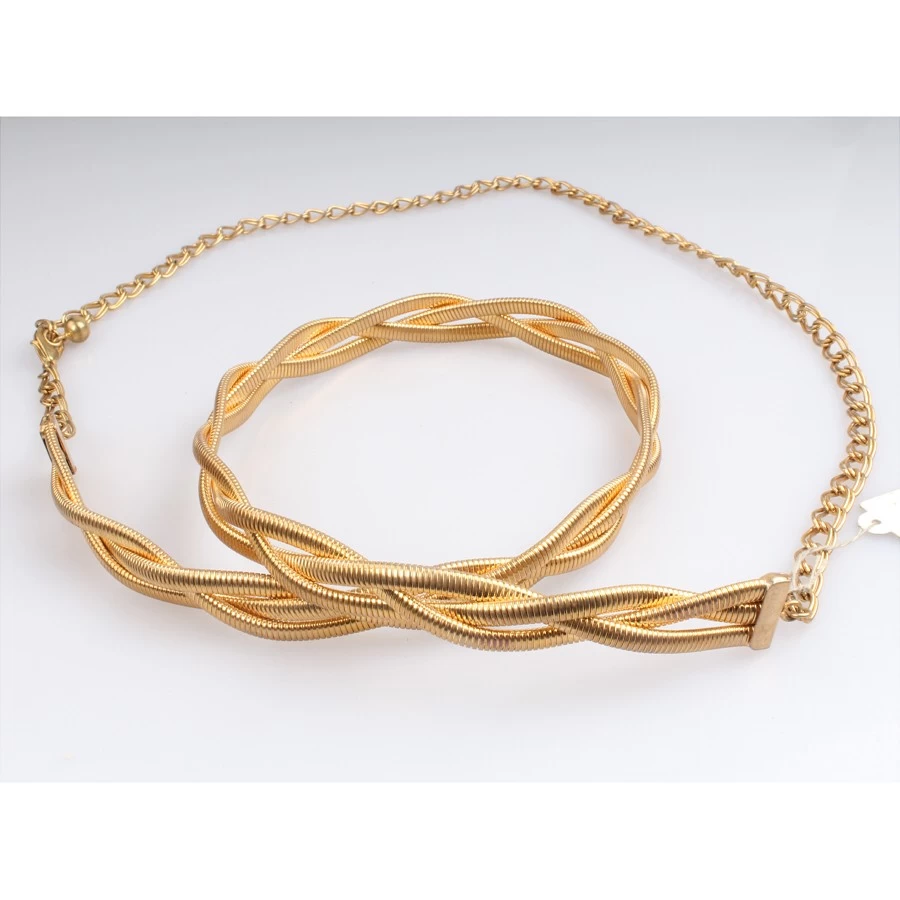
Jewellery is a universal form of adornment. Jewellery made from shells, stone and bones survives from prehistoric times. It is likely that from an early date it was worn as a protection from the dangers of life or as a mark of status or rank.
In the ancient world the discovery of how to work metals was an important stage in the development of the art of jewellery. Over time, metalworking techniques became more sophisticated and decoration more intricate. Meilanxuan create beauty for every woman through earring manufacturer china.

Gold, a rare and highly valued material, was buried with the dead so as to accompany its owner into the afterlife. Much archaeological jewellery comes from tombs and hoards. Sometimes, as with the gold collars from Celtic Ireland which have been found folded in half, it appears people may have followed a ritual for the disposal of jewellery.
This collar was found in a bog in Shannongrove, Co. Limerick, Ireland, sometime before 1783. We do not know what it was used for, but it was probably a ceremonial collar. On the inner side of the collar, under each of the circular terminals, is a hole. The collar probably rested on the chest and was held in place by a chain running between the two holes and passing round the back of the neck.
Medieval jewellery 1200–1500
The jewellery worn in medieval Europe reflected an intensely hierarchical and status-conscious society. Royalty and the nobility wore gold, silver and precious gems. Lower ranks of society wore base metals, such as copper or pewter. Colour (provided by precious gems and enamel) and protective power were highly valued. Some jewels have cryptic or magical inscriptions, believed to protect the wearer.
Until the late 14th century, gems were usually polished rather than cut. Size and lustrous colour determined their value. Enamels - ground glasses fired at high temperature onto a metal surface - allowed goldsmiths to colour their designs on jewellery. They used a range of techniques to create effects that are still widely used today.
The jewellery worn in medieval Europe reflected an intensely hierarchical and status-conscious society. Royalty and the nobility wore gold, silver and precious gems. Lower ranks of society wore base metals, such as copper or pewter. Colour (provided by precious gems and enamel) and protective power were highly valued. Some jewels have cryptic or magical inscriptions, believed to protect the wearer.
Until the late 14th century, gems were usually polished rather than cut. Size and lustrous colour determined their value. Enamels - ground glasses fired at high temperature onto a metal surface - allowed goldsmiths to colour their designs on jewellery. They used a range of techniques to create effects that are still widely used today.
The images decorating the back of this cross were often used as a focus for meditation in the late medieval period. The scenes on the lid show the Instruments of the Passion - scourge, whip, lance, sponge and nails - which were used during the Crucifixion. A tiny fragment of one of them may have formed a relic, stored within the cross’s now empty interior. Pearls symbolised purity, and the red gems may have symbolised sacrificial blood shed by Christ.Meilanxuan Woman's necessities, provide Fashion jewelry wholesale in china.
Renaissance jewellery
Renaissance jewels shared the age's passion for splendour. Enamels, often covering both sides of the jewel, became more elaborate and colourful and advances in cutting techniques increased the glitter of stones.
The enormous importance of religion in everyday life could be seen in jewellery, as could earthly power - many spectacular pieces were worn as a display of political strength. The designs reflect the new-found interest in the classical world, with mythological figures and scenes becoming popular. The ancient art of gem engraving was revived and the use of portraits reflected another cultural trend - an increased artistic awareness of the individual.
Particular types of stone were thought to protect against specific ailments or threats, ranging from toothache to the evil eye. They could also encourage or banish such characteristics as bravery or melancholy. This scorpion etching dates from the 2nd or 1st century BC but has been reused in a medieval ring. Carved Greek or Roman stones were highly valued in the middle ages. They were found in excavations or in surviving earlier pieces of jewellery and traded across Europe. The scorpion had an enduring reputation as a protective amulet. It was believed to heal patients from poisoning and also, as symbol of the Zodiac sign Scorpio, it was associated with water and therefore believed to have a cooling effect on fever. Remedies against poisoning were also made by infusing scorpions in oil and herbs. The Medici Grand Duke Francesco I (d. 1587) published a recipe for an anti-poison oil effective against 'all sorts of poisons ingested by mouth, stings and bites'.
Renaissance jewels shared the age's passion for splendour. Enamels, often covering both sides of the jewel, became more elaborate and colourful and advances in cutting techniques increased the glitter of stones.
The enormous importance of religion in everyday life could be seen in jewellery, as could earthly power - many spectacular pieces were worn as a display of political strength. The designs reflect the new-found interest in the classical world, with mythological figures and scenes becoming popular. The ancient art of gem engraving was revived and the use of portraits reflected another cultural trend - an increased artistic awareness of the individual.
Particular types of stone were thought to protect against specific ailments or threats, ranging from toothache to the evil eye. They could also encourage or banish such characteristics as bravery or melancholy. This scorpion etching dates from the 2nd or 1st century BC but has been reused in a medieval ring. Carved Greek or Roman stones were highly valued in the middle ages. They were found in excavations or in surviving earlier pieces of jewellery and traded across Europe. The scorpion had an enduring reputation as a protective amulet. It was believed to heal patients from poisoning and also, as symbol of the Zodiac sign Scorpio, it was associated with water and therefore believed to have a cooling effect on fever. Remedies against poisoning were also made by infusing scorpions in oil and herbs. The Medici Grand Duke Francesco I (d. 1587) published a recipe for an anti-poison oil effective against 'all sorts of poisons ingested by mouth, stings and bites'.
For more information, please click new style Jewelry on sale.




